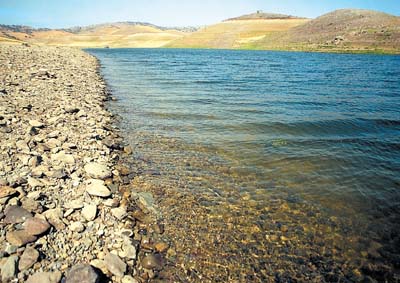When Secretary of the Interior Ken Salazar called fixing the
Delta a
”
huge priority
”
for the federal government, the estuary in Stockton’s backyard
joined a short list of sadly struggling natural treasures.
By Alex Breitler, McClatchy News Service
When Secretary of the Interior Ken Salazar called fixing the Delta a “huge priority” for the federal government, the estuary in Stockton’s backyard joined a short list of sadly struggling natural treasures.
Places such as the Everglades, the Great Lakes, Chesapeake Bay.
“How we deal with the Bay-Delta system is a defining moment in how this country is going to deal with complex natural resources problems,” California Department of Water Resources Director Lester Snow told legislators at a September hearing in Washington.
“If we can’t figure out a way to deal with this system, we need to pack it up and go home and wait for the entire system and economy to collapse,” Snow said.
There has been a lot of talk lately about working together to fix the Delta. But if these other restoration efforts are any indication, there is a rocky road ahead:
– Nine years after a much-celebrated and “historic” Everglades restoration plan was signed into law by President Bill Clinton, none of the 60-plus projects that are part of the plan have been completed.
– Removing toxic sediment from the Great Lakes is expected to take 77 additional years if the work continues at its current pace, according to a report released last month.
– And at Chesapeake Bay, the Environmental Protection Agency has acknowledged that water quality goals set forth in a 2000 agreement will not be met by 2010 as had been hoped.
“To be fair, there has been great science done by the EPA,” said Roy Hoagland, a vice president at the Chesapeake Bay Foundation. “They have done really quite a remarkable job in identifying the problems. This is one of the most studied estuaries in the world.”
“What they have not done,” Hoagland continued, “is implemented a solution. They have not been a leader.”
The federal government is promising leadership on the Delta. Grants totaling $400 million have been awarded to bolster California’s water supply; six federal agencies have signed an agreement to coordinate on Delta issues.
Already, however, the feds have drawn criticism from more than one side in California’s water tussle.
Politicians representing agricultural areas in the south San Joaquin Valley, where water exports from the Delta have declined because of drought and endangered species, have blasted the federal government for failing to act sooner and more decisively.
“We are long past the point of more committees. What we need is action,” said U.S. Rep. Dennis Cardoza, D-Atwater.
On the other hand, some Delta advocates are upset over the Obama administration’s decision to seek further review of new rules intended to protect smelt and salmon – rules that also hamper water deliveries to the south Valley and Southern California.
U.S. Sen. Dianne Feinstein requested that review, saying “it may well bring a different point of view. … And we all ought to be open to a different point of view if it’s based on sound science.”
If Delta interests’ renewed relationship with the feds runs aground at times, that is nothing new. It has happened before with ambitious restoration projects.
The Chesapeake Bay Foundation earlier this year sued the EPA over the bay’s continually poor water quality. In a story that should sound familiar to those who follow Delta issues, the 200-mile bay that stretches from southern Virginia to Baltimore is overloaded with nutrients and sediment because of agricultural and urban runoff. Algae blooms rob the water of oxygen, killing fish.
Also roughly comparable to the Delta is the situation in the Everglades, once-vast wetlands that were reclaimed by workers who shoveled out 720 miles of canals and piled up 1,000 miles of levees. Farmers later planted sugar cane while the water was diverted for south Florida’s growing population.
The U.S. Army Corps of Engineers’ implementation of the 2000 agreement to restore what is left of the Everglades was criticized last year by the National Research Council, which found that inadequate project planning and lack of funding left the plan well behind schedule.
Corps spokeswoman Karen Tippett said work is about to begin on one pump station.
“It’s been a very long road,” she said. “What we hear from our sponsors is that our processes take too long. I don’t know how we can improve upon that.”










